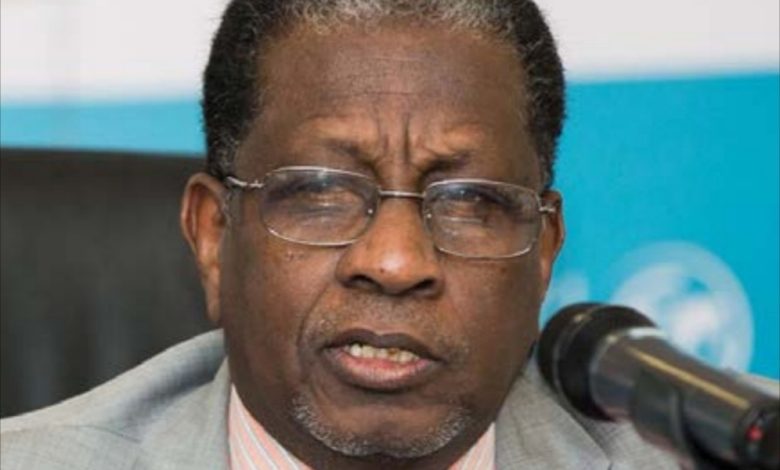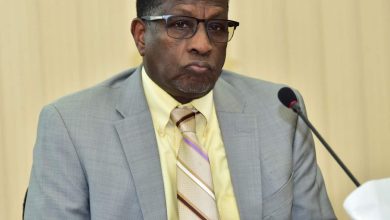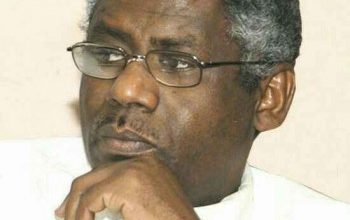Sudan’s RSF and the Quest for a Project (3-3)

Tigani Abdelkader Hamed
September 27, 2023
(Translated by: Ramadan Ahmed)
Borrowing the Vision of the New Sudan
In an article dated 5 September 2023, titled “John Garang Restless in His Grave,” Dr. Alwathiq Kamir critically discusses a call made by Yasser Arman on 27 August 2023 for a direct meeting between General Burhan and General Hemeti to consider the agenda for establishing a new state and addressing the root-causes of the problem. Alwathiq Kamir strongly rejected Yasser Arman’s invitation, viewing it as implying that the RSF led by Hemeti are similar to the People’s Movement led by Garang. According to Alwathiq Kamir, there is no basis for such a comparison since Garang’s army did not engage in military missions in foreign countries for financial gain and was not linked to the ” Mubior” family. In contrast, Hemeti’s forces are associated with a political project, a broad social base, and are rooted in familial and tribal loyalties. They constitute an army that protects economic interests for an alliance of internal and external powers. They are not a political movement but are attempting to borrow the concepts and ideas of the vision of the “New Sudan.”
Dr. Alwathiq Kamir’s views were echoed without a response from Yasser Arman. Certainly, General Hemeti and his troops needed to “borrow”, as he is a daring politician with social influence and financial resources but seeks a “big idea” to align himself with. When considering the matter from the perspective of Yasser Arman and emerging politicians within the Freedom and Change Alliance (FCA), they have limited sources of strength aside from what remains of the “New Sudan” concept. Hence, they require “borrowing” “hard strength” – military and economic – and have no objections to the RSF serving this purpose. They also have no objections to Hemeti’s group replacing Colonel John Garang. This is a matter that needs further exploration.
FCA in Search of Hard Power
Suppose we are to borrow the concepts of “soft power” and “hard power” as defined by Joseph Nye of Harvard University. In that case, we can say that the FCA, in their various wings, have increasingly depleted their sources of soft power. These sources included revolutionary momentum, symbolic resistance, organisational skills, and popular sympathy. The youth of the revolution now chant slogans against them, accusing them of selling out the blood of the martyrs on all fronts. On the other hand, they have also lost the “hard power” that armed opposition movements used to provide, especially after the Juba Agreement, which led these movements to join the existing government, distancing themselves entirely from the FCA.
As for the semi-solid financial backing represented by funding from some active businessmen, it has also contracted. Figures like Osama Daoud and others have begun to see the leadership of the FCA as mere opportunists. In this situation, they had no choice but to search for both soft and hard power. In their search for soft power, they stumbled upon remnants of ideas left by John Garang about the project of the “New Secular Democratic Sudan.” They hastily adopted these ideas without adequate representation.
Regarding hard power, they did not have an open treasury or an available rifle except for the treasuries and rifles of the RSF under Hemeti’s leadership. Additionally, the regional and international community’s influence, moving freely in Sudan, whether through ambassadors, intelligence agencies, agencies, or the UN Permanent Representative, played a significant role. This is precisely the turning point at which the role of UN envoy Volker Perthes escalated. Instead of garnering support to assist in the democratic transition process, such as drafting the constitution and electoral law, Perthes turned to direct party politics and aligned himself with the FCA agenda, providing them with international and legal cover. This allowed them to become active in efforts to dismantle the military establishment, as they believed this process would pave the way for them to gain control of the state apparatus and build the New Sudan. When such dismantling was impossible without the hard power factor, they turned to the RSF. If an alliance is formed between the RSF and FCA, and such an alliance holds together for a suitable period, it would be the first time the FCA would have both forms of power – soft and hard – at their disposal. This could potentially mark a real turning point in Sudanese politics.
However, the FCA quickly harnessed the support of the RSF, and General Hemeti and his troops embraced the concept of the New Sudan. The question remains whether this same concept is capable of giving birth to a new Sudan that is more fortunate than the “New Sudan” that emerged in South Sudan.
The New Sudan and the Theory of Center and Periphery
The idea of the main contradiction between the center and the periphery has its origins in the early European Marxist literature. According to their perspective, the center is a privileged bourgeois construct, and everything produced by the bourgeoisie in terms of culture, art, or economy primarily serves their interests. Therefore, it is necessary to remove this class through a comprehensive revolutionary upheaval, allowing the working class, led by the Communist Party (in Lenin’s case), to take control of the state apparatus and reorganize the power structure in its favor.
This viewpoint extended to the newly independent countries in the Third World after the end of World War II, which had just emerged from European colonialism (itself a product of the bourgeoisie mentioned earlier). It is commonly agreed that independence was incomplete because the colonial state left behind a significant social, economic, and cultural gap between urban centers and rural peripheries. However, there was a difference of opinion on how to bridge this gap. Some believed, like the early Marxists, that this gap could only be closed through a comprehensive revolutionary upheaval led by the proletariat under the leadership of the Communist Party (as in Lenin’s case).
This was the vision initially adopted by the Sudan People’s Liberation Movement (SPLM) in its early days in the 1980s. They called for a New Secular Democratic Sudan at that time and later returned to the founding platform. They believed that this goal could only be achieved by breaking down and dismantling the old Sudan (starting with the military establishment). This idea influenced many emerging political movements, armed and unarmed alike, who started using concepts and terminology from the old SPLM movement, speaking of the New Sudan and the necessity of returning to the founding platform, which, in their view, required breaking down the old Sudan.
However, some failed to recognize that even Colonel Garang himself later realized, after a quarter-century of revolution and destruction, that this vision was not practically achievable. He modified his positions to emphasize that the New Sudan was not fundamentally opposed to the old Sudan and did not require complete destruction to be built anew. Instead, he argued for a transformative process that involved restructuring the social, economic, and political base while retaining the positive elements of the old Sudan.
He believed that the “modern progressive forces” aiming to break down the old Sudan and build a new one were not fundamentally different from the “traditional forces” seeking the same goal. Both were competing for control over the same state structure. Moreover, he contended that the “modern progressive forces,” despite their claims of modernity and secularism, were willing to ally with traditional forces in rural areas when convenient.
Despite these changes, some activists within the Forces for Freedom and Change (FFC) remained committed to the old vision of the New Sudan project. They attempted to promote it to General Hemeti and his forces without realizing the shifts in Garang’s thinking and the results of his approach. However, it quickly became apparent that their proximity to the RSF did not grant them the hard power they sought, nor did they possess a soft power or a constituency to rely on.
Conclusion:
While there are differences and specific details that distinguish Gaddafi’s phenomenon from Hemeti’s, there are two commonalities: the method of ascending to power and the method of falling from it. Just as Colonel Gaddafi ascended to power and retained it by deliberately penetrating and dismantling the conventional military institutions and replacing them with a loyal tribal network, General Hemeti followed the same path. He had at his disposal the military, financial, and regional support that Gaddafi or President Omar al-Bashir lacked. Had it not been for some unexpected developments that thwarted his plan at the last minute, he could have seized and retained political power in Sudan for decades.
The factors that led to Hemeti’s fall are the same ones that caused Gaddafi’s downfall. These include the fragility of the idea, institutional contradictions, and the social base’s instability. The ideological concept provided by the Green Book was fragile and not rooted in popular convictions or realities. Likewise, Hemeti’s regime did not have a solid ideological foundation and occasionally adapted to various ideas proposed by its allies, whether domestic or foreign. The alternative institutions he established clashed continuously with existing state institutions, nearly uprooting them, which led to inevitable confrontations. Finally, the social base he relied on was narrow, composed of limited tribal groups that pursued their own interests, particularly wealth accumulation and proximity to power. In both cases, these social groups were unlikely to lift a finger to defend Hemeti and his forces when they needed support.
However, the fierceness of the fighting and the determination shown by Hemeti’s tribal group in the recent battle for Khartoum cannot be denied. Despite this combativeness, they suffered significant losses among their fighters and field commanders. This represents a major setback for both internal and external actors who had bet on the victory of the RSF. It will also be a significant psychological blow to those who remain within these forces. Since they lack a clear vision, leadership, and an understanding of who the enemy is, they have little choice but to surrender. However, it’s not unlikely that some elements within their ranks may gravitate toward the theory of centre and periphery and the concept of the New Sudan.
Furthermore, the military defeat and tribal loyalty may drive some elements within these forces towards ethnic fundamentalism, as has happened in similar cases. In such a scenario, ethno-fundamentalists attempt to interpret history from the perspective of the central dominance of a particular ethnic group over marginalised ethnicities. They argue that influential ethnicities have long controlled wealth and power, and it is time to forcibly displace them and make room for other ethnicities that have been on the periphery. This kind of one-sided view can hinder any serious attempt to find a broader national framework that transcends ethnic divisions and achieves justice for all.
As for the advocates of FCA who call for breaking down of the old Sudan and returning to the founding platform, they seem to have only two options left, in my estimation: strategic retreat or persisting in armed confrontation. The first option requires revising their positions and changing their strategy, especially after witnessing the model of the “new” Sudan presented by the RSF in the recent war. They have also seen the resilience and unity of the Sudanese Armed Forces (SAF) and the unprecedented popular support they enjoyed. The second option, persisting in armed confrontation, would mean clinging to the idea of dismantling the old Sudan and rebuilding it from scratch. However, this idea necessitates a liberated territory, an army fighting for it, and a social base that supports it, none of which are currently available to the FCA after the exit of the RSF from the scene. All they have at their disposal now is to strengthen their relationships with certain foreign capitals and engage in a form of soft external opposition. This type of opposition naturally turns its participants into functional groups supported by foreign powers to safeguard their interests in the manner they see fit.
Citizens need to accept and live with the stark reality that there is no absolute evil called the old Sudan, just as there is no virtuous society called the new Sudan. All we have is this impoverished, divided Sudan burdened with debt and wounds. We must either humble ourselves and return to the idea of ‘equality’ among us, working to reunite, heal wounds, and commit ourselves to the arduous process of reform—with the patience, tolerance, and wisdom it requires—or we can engage in a journey of hatred, vengeance, and destruction, ultimately turning into a displaced and homeless people seeking refuge and sustenance.


